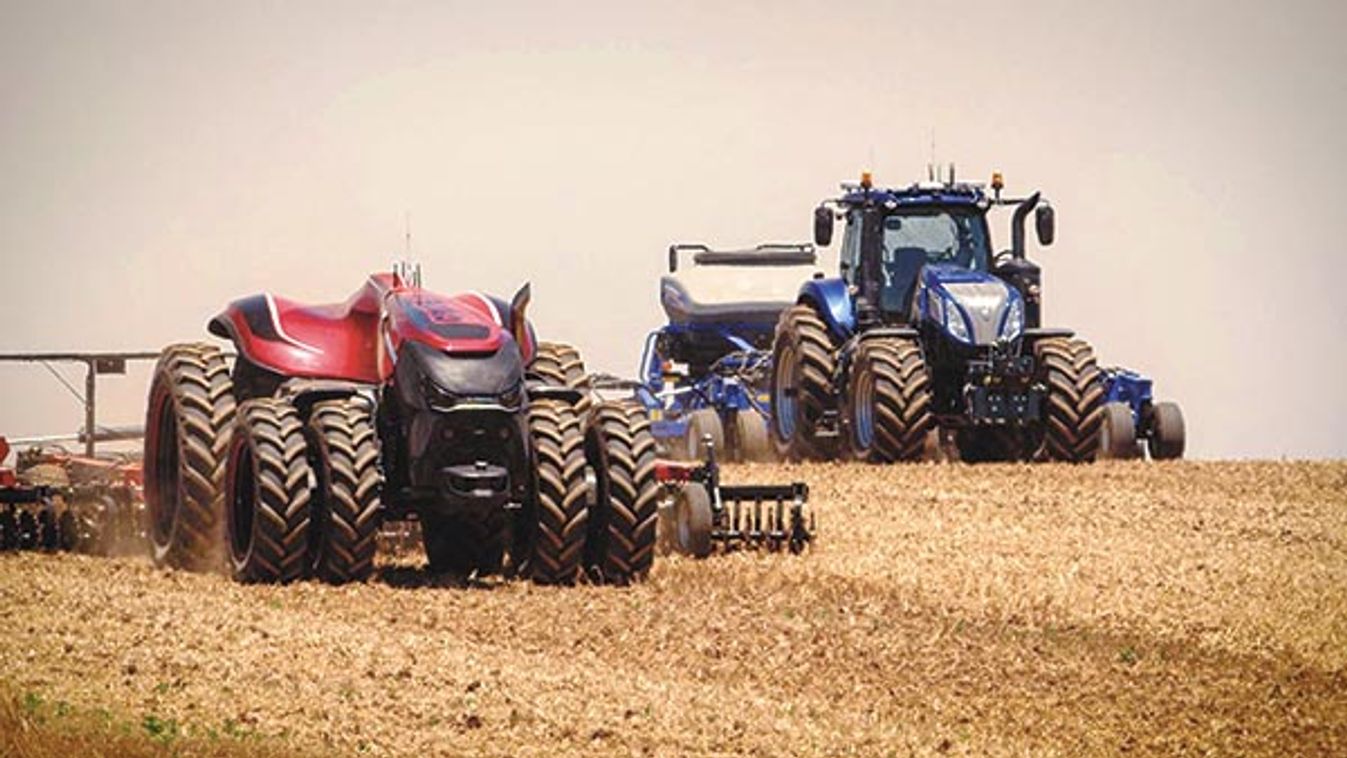
Őrült sok pénzt költöttek!
Mintegy 77 milliárd forint értékben szereztek be új mezőgazdasági gépeket a magyar vállalkozások az idei első fél évben, ami 40 százalékos növekedés éves összevetésben. Az összeg felét a lízing tette ki.
Kép: Ferrari Press Agency Ref 7277 Tractor 1 02/09/2016 See Ferrari text Picture MUST credit : CNH Industrial The future of farming has been revealed – in the shape of an autonomous tractor that can plough, sow and harvest fields around the clock.A working concept has been produced by industrial vehicle maker CNH through its agricultural machinery off-shoot Case IH, and then set to work on a real farm in Kentucky, USA.The tractor is equipped with technology to make it programmable from a tablet or a home computer hub.It’s route can be plotted and changed and onboard sensors in the shape of cameras , GPS and radar can detect obstacles and even passing traffic when on the road.Two or more could be used in tandem, making the life of a farmer and his workforce considerably easier at the busy times of the year.Dutch registered but London-based CNH worked with US company Autonomous Solutions to build the tractor.Path planning technology lets farmers manage their fields and oversee the overall operation of multiple vehicles simultaneously. The tractor, called ACV for autonomous concept vehicle, can drive from a parking area along a private road to a field where it can commence its agricultural duties without any further human intervention. The tractor is also designed such that it can work in tandem with manned machinery.It boasts a 419-horsepower engine and clocks a maximum speed of 31 mph (50 km/hr). Each unmanned farm vehicle is equipped with a series of hardware and software components that permit a user to toggle between manual and robotic control. The components work with the existing by-wire, mechanical, or hydraulic control system and link vehicles to a central command station, allowing a single operator to simultaneously manage multiple vehicles throughout a farm operation.Advanced path-generating algorithms calculate the most efficient area coverage pattern for a field taking into account the type of task, vehicle, size of implements, number of vehicles in the field, implement turn radius, and more.Autonomous tractor technology will address the growing concern of labor shortages while also increasing productivity and efficiencies bringing higher yields. The technology will allow for true 24-hour, round the clock operations and a farmer will be able to manage their operation from their home office or on a tablet on the go. Dealing with the legal implications of self-driving tractors means it could take three years before they’re commercially available.There would be concerns with how a farmer would go about moving the tractor from one field to another that may be across a road, since no one is physically driving it, despite the inbuilt safety technology. OPS:The ACV tractor in action, working in tandem ith a more orthodox tractor which is driver and autonomously operated but less high tech Picture supplied by Ferrari, Image: 298617502, License: Rights-managed, Restrictions: , Model Release: no, Credit line: Profimedia, Ferrari, Fotó: Profimedia

A legfontosabb mezőgazdasági gépek közé tartozó traktorok és kombájnok piaca is bővült, az idei első hat hónapban 1387 új traktort adtak el, ami 32 százalékos növekedés éves összevetésben - közölte a Magyar Lízingszövetség az MTI-vel az Agrárgazdasági Kutató Intézet adatai alapján. Magajáró rakodónak nevezett gépből 208-at, 68 százalékkal többet adtak el az idei első hat hónapban, mint a tavalyi első fél évben. Új kombájnokból 222 kelt el, ami 12 százalékos bővülés.
Tóth Zoltán, a Magyar Lízingszövetség főtitkára a közleményben kifejti: a lízingvállalatok kulcsszerepet játszanak a traktorfinanszírozásban, számos agrárvállalkozás ugyanis lízingkonstrukción keresztül szerzi be ezeket a járműveket. Az értékesített mezőgazdasági járművek, gépek közel 77 milliárdos beszerzési értékének mintegy 46 százalékát adták a lízingkonstrukciók.
A Magyar Lízingszövetség adatai szerint a mezőgépek szegmensében a finanszírozott érték, vagyis az új kihelyezések összege 35,2 milliárd forintot tett ki, ami 16 százalékos emelkedés egy év alatt. Ez azért is figyelemre méltó, mert egy évvel korábban a mezőgép-finanszírozásban a jegybank növekedési hitelprogramjához köthető kihelyezések aránya 80 százalékos volt, míg ez a program kifutásával, az idén 36 százalékra csökkent. Ez azt mutatja, hogy az agrárcégek a piaci kamatozású lízinget jelentős mértékben igénybe veszik - tette hozzá.
Az agrárlízing-piac teljes finanszírozott állománya az első fél év végén meghaladta a 109 milliárd forintot, ez 14 százalékkal több, mint egy évvel korábban, egyben 2009 óta a legmagasabb érték. Tóth Zoltán szerint a következő időszakban további stabil növekedés várható az agrárfinanszírozásban és ezen belül a lízingkonstrukciók népszerűsége is nőhet.
